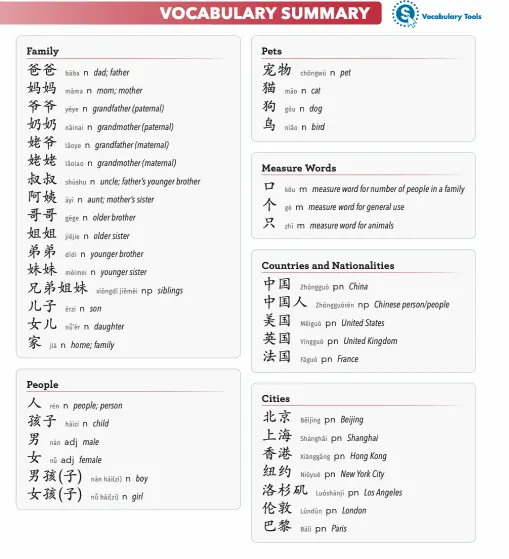启程 Journeys to Chinese Proficiency
Designed specifically for the middle and high school beginning-level student to explore Chinese language and culture.
Watch VideoUnit Opener
The first two pages introduce you to the unit and lesson themes. Dynamic photos and an overview provide an orientation to the content in each lesson.
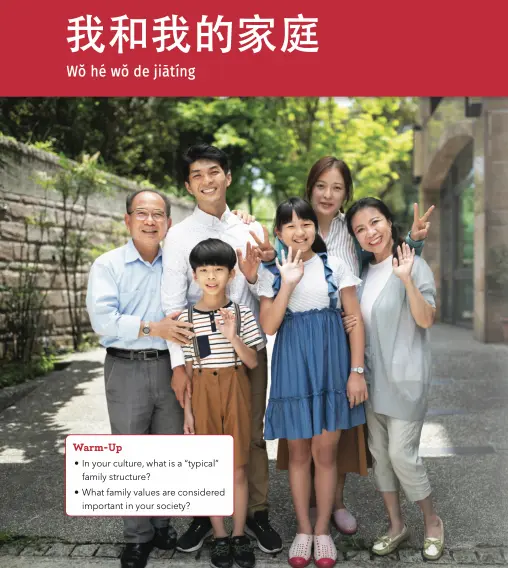
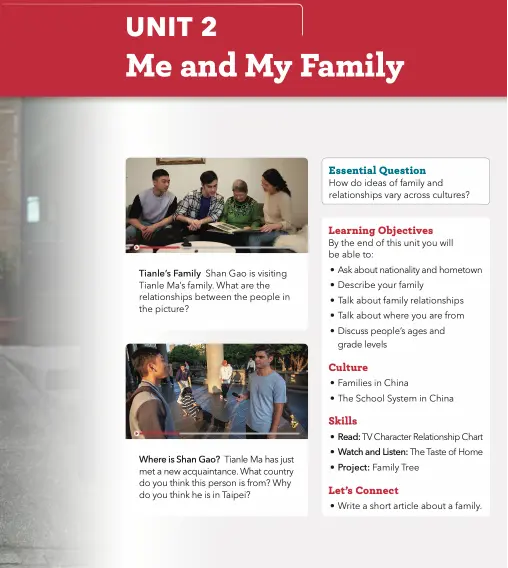
Focus on Vocabulary
Introduces thematic vocabulary in real-life contexts.
- Communicative Goals highlight real-life tasks students will be able to carry out in Chinese by the end of the lesson.
- Easy-to-study contextualized vocabulary lists present thematically relevant vocabulary.
- Dynamic, full-color photos contextualize and illustrate the vocabulary.
- Activities include at least one listening activity help students practice the new vocabulary.
- Notes provide additional information for learning vocabulary.

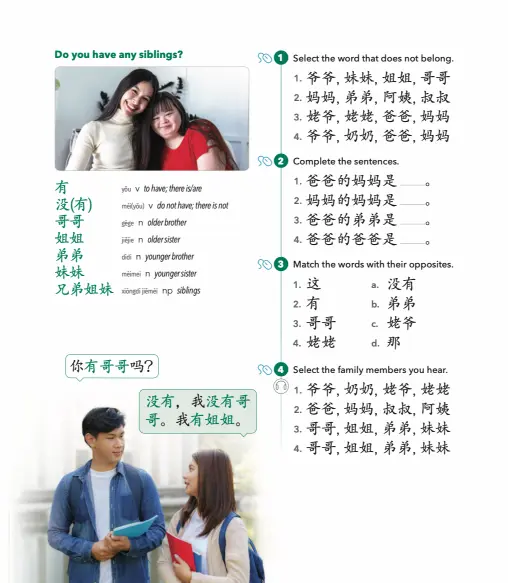
Language Focus
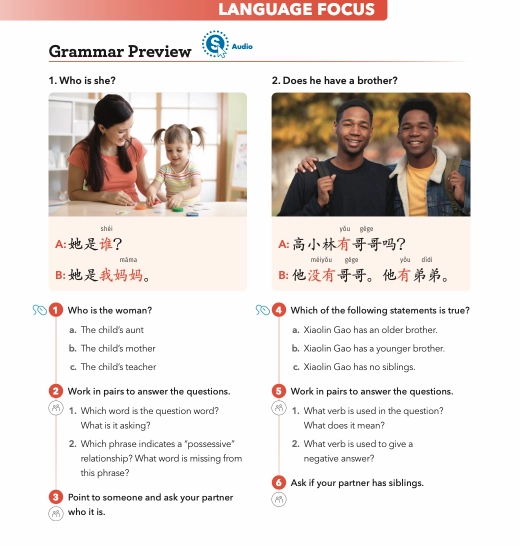
Grammar Preview presents new grammar topics in context:
- Two audio-recorded dialogues containing key grammar points present new topics in context.
- Understand, Discuss, Interact three-step activities guide inductive learning and active analysis of the grammar points before they are formally introduced.
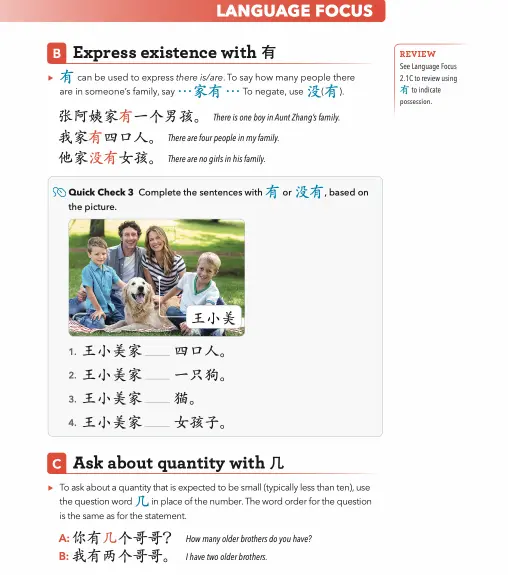
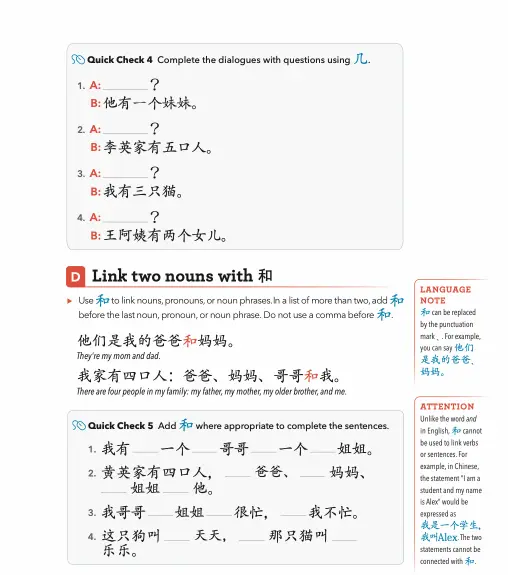
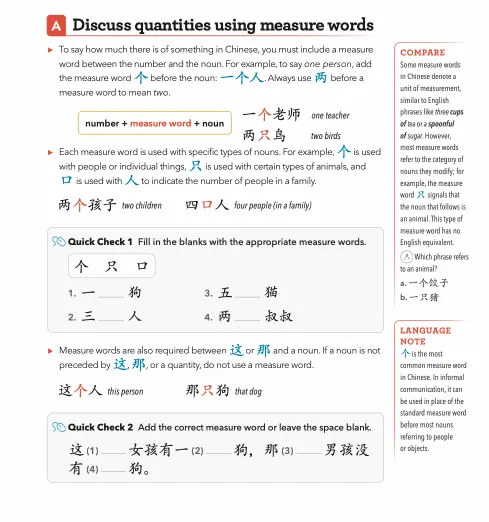
Topics present Chinese grammar in a graphic-intensive format:
- Focusing on communicative functions, each lesson features two to four grammar topics.
-
Sidebars with additional information help students navigate
the topic at hand.
- Compare draws comparisons to English grammar.
- Language Note and Attention alert students to usage and common pitfalls.
- Review cross-references related grammar content in previous lessons.
- Culture Note introduces relevant cultural information.
- Quick Check activities allow students to check their understanding of specific aspects of each topic before moving on.
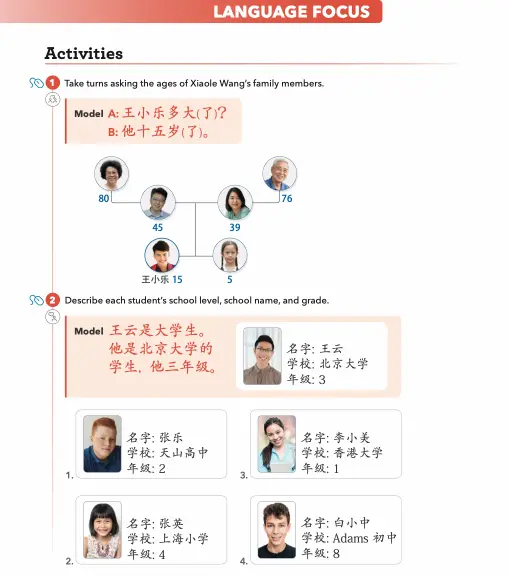

Activities feature directed and communicative practice.
- Activity pages provide oral, structure-focused activities with cues in Chinese, followed by written practice and open-ended communicative activities.
Geography Focus
- Introduction explores cultural facets of a city or region of the Chinese-speaking world.
- Photos illustrate cultural and geographical highlights of the city or region.
- Map shows the general location of the featured city or region.

Character Focus
Lesson 1 of each unit explains and practices one aspect of Chinese characters:
- Explanations discuss the construction of Chinese characters.
- Quick Check activities allow students to practice writing and recognizing character components.

Language in Action
Lessons 2 and 4 of each unit tell the story of a group of students living in Taipei.
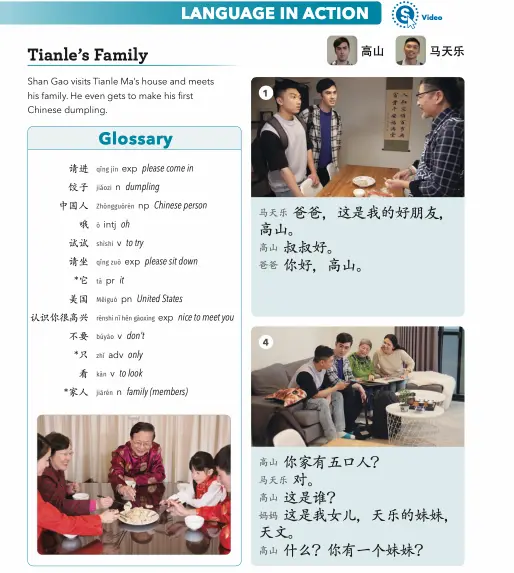
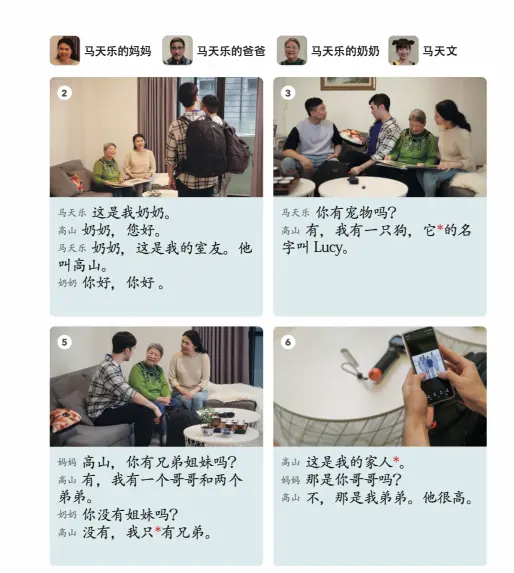
Before students watch:
- Storyboards show excerpts of the video episode.
- Conversations reinforce vocabulary and structures from the new lessons in a comprehensible way.
- Glossary defines unfamiliar words and expressions from the conversations in the episode.
Language in Action videos shot on location in Taiwan present language and culture as students follow the adventures of a group of friends in Taipei. Video episodes appear in the Language in Action section of the Supersite.
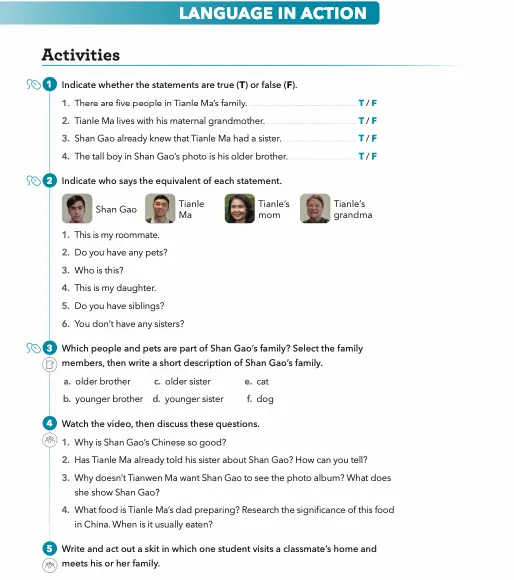

After students watch:
- Activities check comprehension of key information, prompt discussion and intercultural comparison, and give students the opportunity to role-play interactions based on the video.
- Everyday Chinese provides practical, informal expressions from the video and prompts students to practice using these expressions on the spot.
- Culture Focus highlights a cultural aspect from the video.
Culture in Context
Appears in every second and fourth lesson and explores cultural themes related to the unit:
- Cultural reading in English presents an aspect of Chinese culture that connects to the unit theme.
- Photos and realia bring to life important aspects of the theme.
- Activities invite students to investigate, interact, and reflect on the cultural topic.
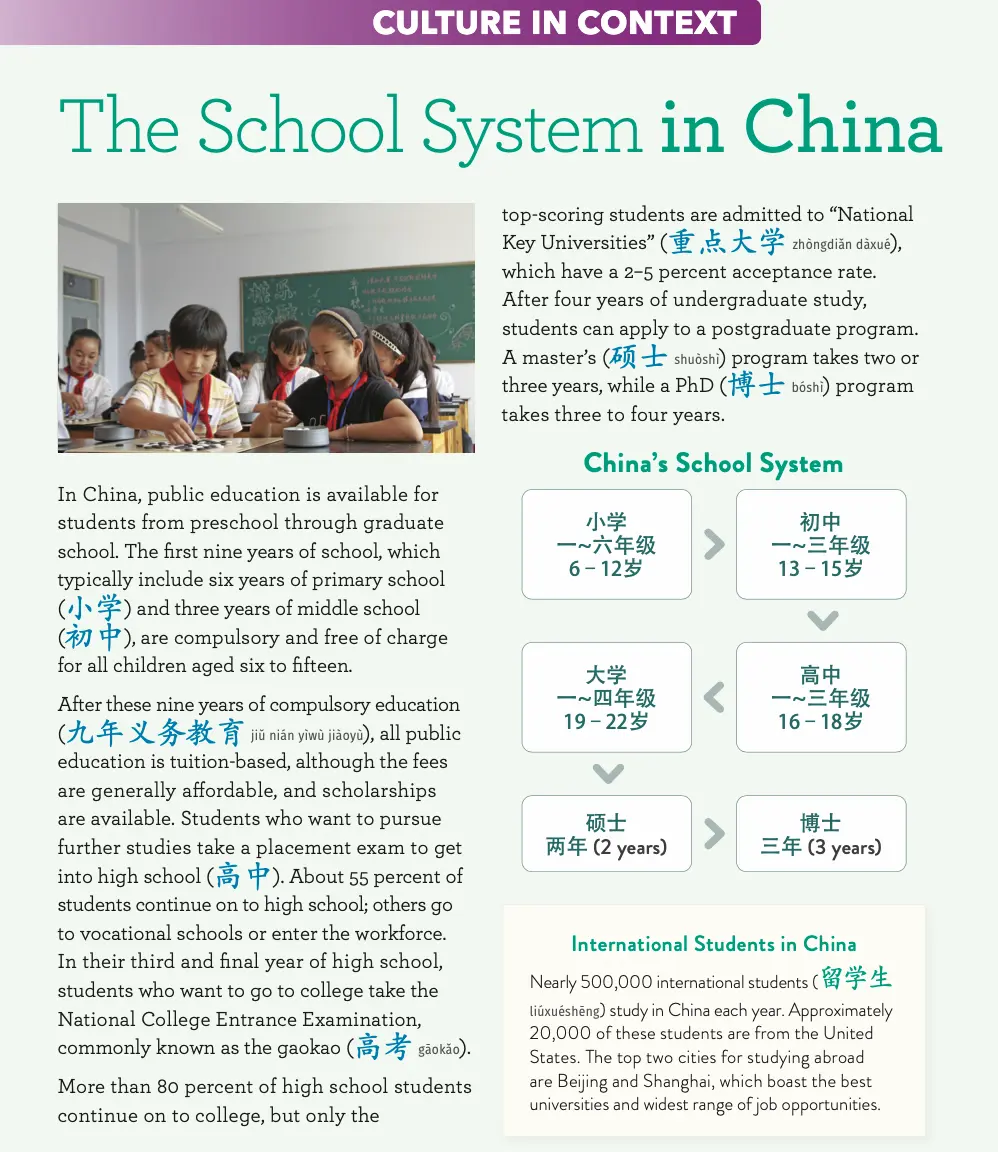

Authentic Video
Appears in every third lesson and exposes students to authentic Chinese language and culture in context.
- Introduction gives students background on the topic before they watch the video.
- Comprehension activities ask basic questions to make sure students understand the gist of the video.
- Discussion questions encourage students to reflect on cultural similarities and differences.

Pronunciation Focus
Appears in every third lesson and presents and practices one aspect of the basics of Chinese pronunciation.
- Using pinyin, the Pronunciation section explains the sounds, tones, and pronunciation of Chinese.
- Quick Check activities let students practice pronunciation and pinyin.
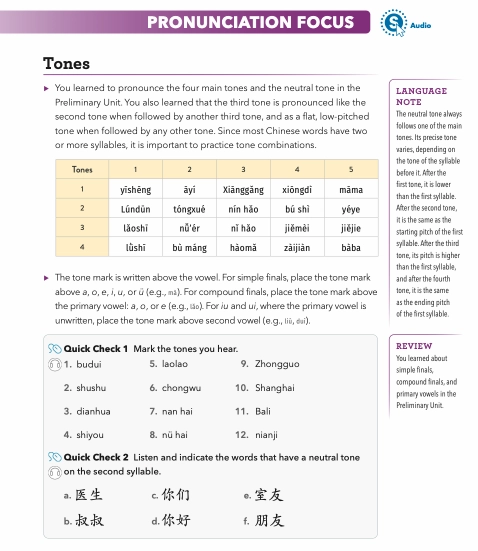
Synthesis
This section at the end of each unit pulls the lessons together.
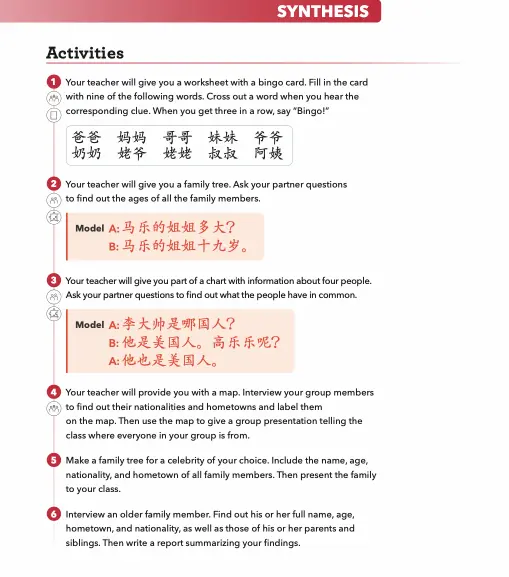
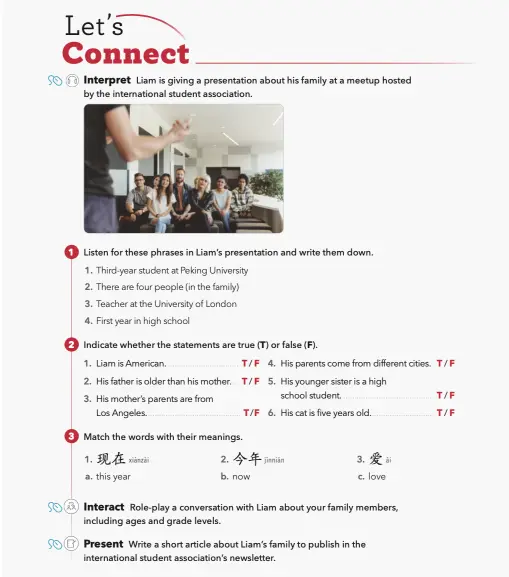
Synthesis pulls the lessons together with cummulative practice and a task-based activity:
- Contextualized activities give students the opportunity to synthesize what they learned in the unit. Formats include worksheet and info-gap activities, real-world tasks, and presentations.
- Let‘s Connect is a set of interpretive, interpersonal, and presentational activities in the style of Integrated Performance Assessment. Based on audio or textual content, the activity addresses key communicative goals of the unit and links back to the Language in Action video.
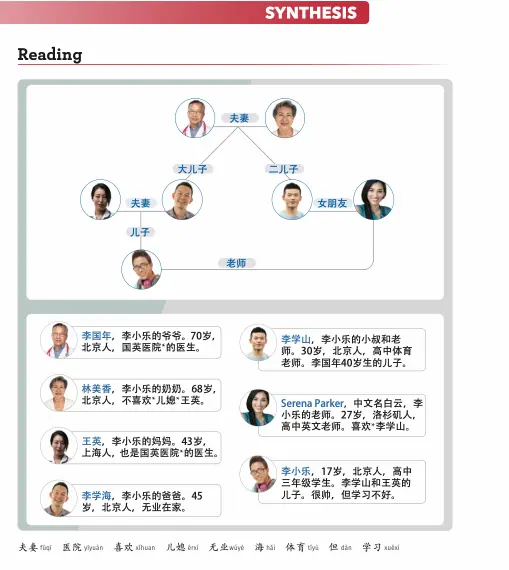
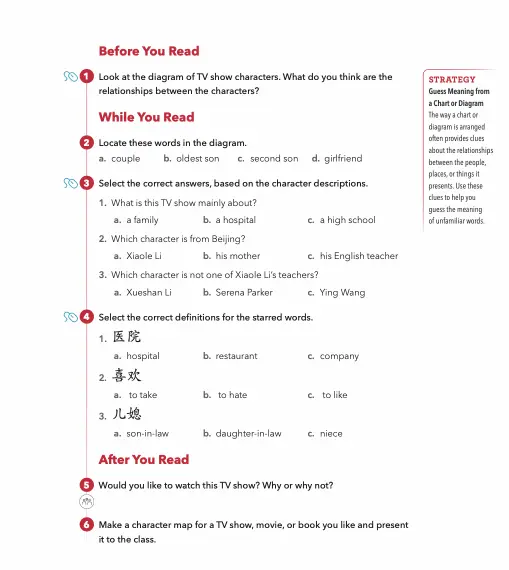
Reading develops reading skills in the context of the unit’s theme.
- Semi-authentic readings come from a variety of genres, relate to the unit theme, and combine unit vocabulary with new words.
- Before You Read, While You Read, and After You Read activities help students navigate the text.
- Strategy gives students tools for understanding content that includes unfamiliar words.
Vocabulary Summary
- Vocabulary Summary provides all of the unit vocabulary at a glance.
- Now I can… statements summarize what students can do at the end of the unit.
